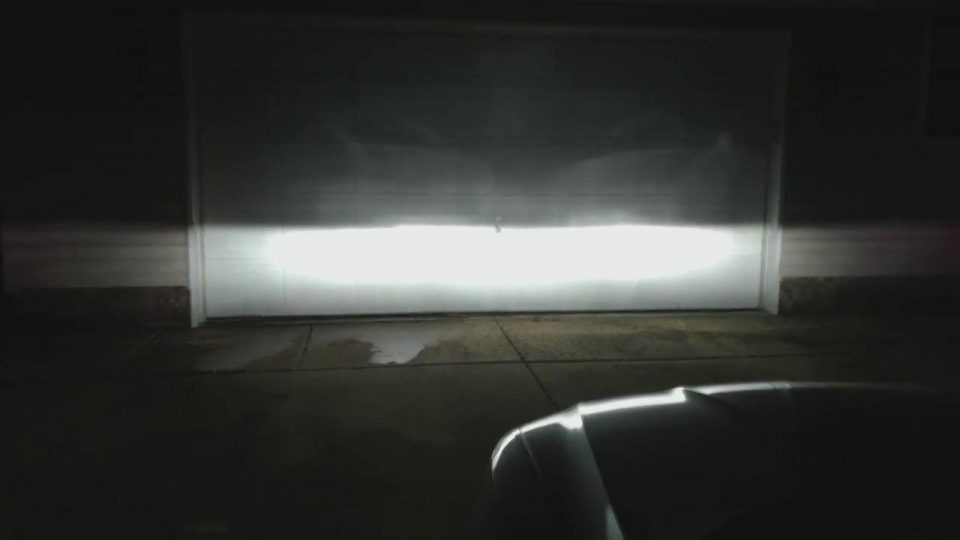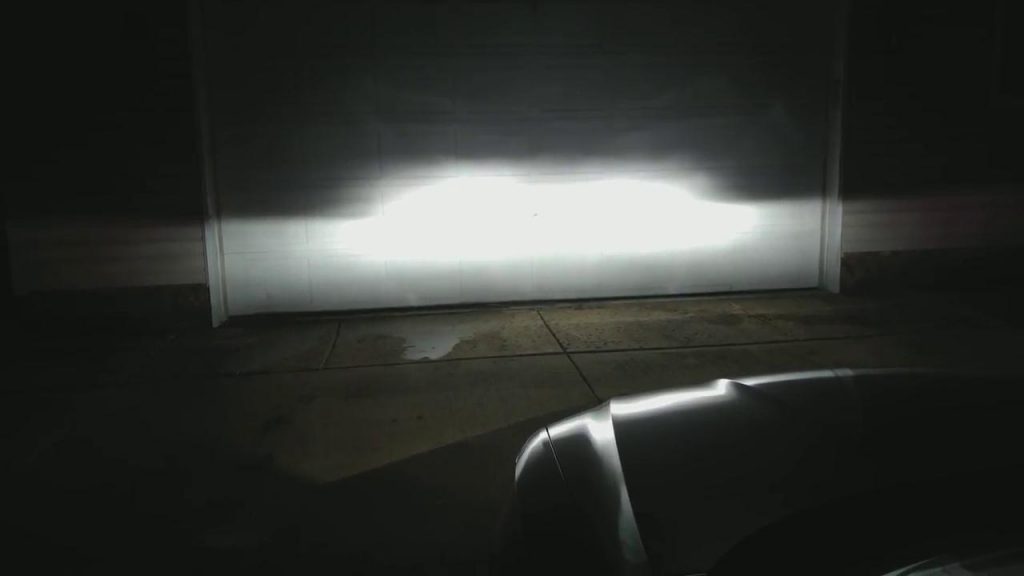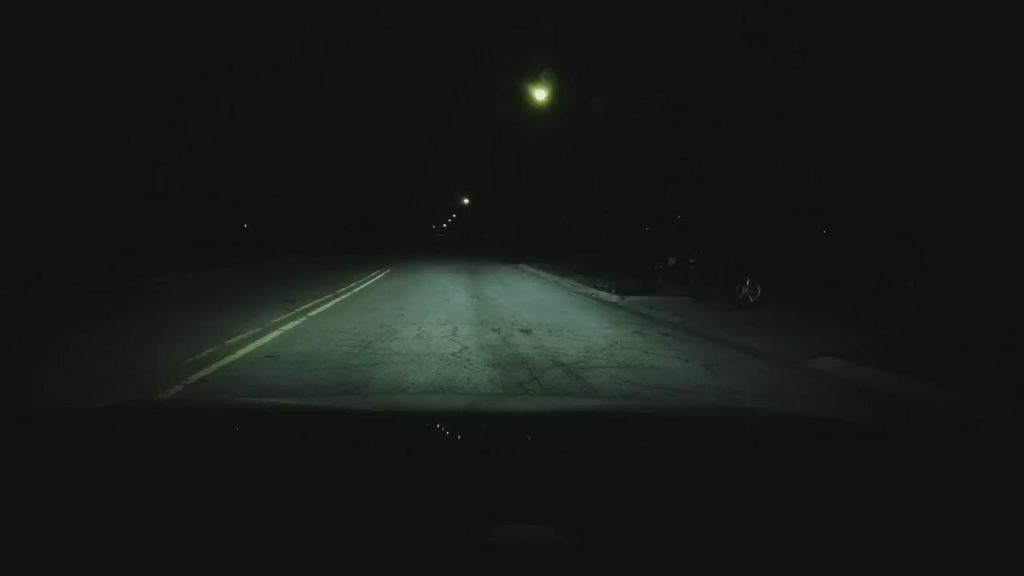
How Volkswagen Headlight work with LED
What I’m going to do is show you what LEDs are actually supposed to look like. This will be a benchmark to compare all other LED headlights because this Volkswagen Passat came with the upgraded light package that has LED headlights from the factory. What we’re going to do is the same old test we’re going to look at it at the door and see the diffusion pattern.

There is the stock LED headlights in the Volkswagen Passat. This is the low beams and notice the diffusion is very nice. We got a little bit of brightness heading in the direction towards where we’re looking.

If switch over to bright, we get a lot more light in a particular direction which is straight forward. This is important because a lot of LEDs tend to have lights that when you put on the high beams, just increase the angle of the light instead of directing the light down the road.

As you can see the lights go down the road very far, the throw distance is long. The light is properly diffused with no patchy spots, no scattered beams.

If we slip onto the high beams, you’ll see we get more distance down the road, not an increased beam angle. Increased beam angle simply blinds other drivers and doesn’t help you as a driver at night. The key thing to remember is these have good throw distance because they have a trajectory in which the light is being casted.
Many conversion kits emphasize the amount of lumens that they can produce but they don’t mimic a halogen inside of a housing design for a halogen.
In modern cars, they’re not using reflector units anymore, reflector units are being phased out. In modern cars or what we call projector units they have this kind of like bubble inside of them, and what it does is it allows light to be focused on a very specific beam.
The projector units are taking over and replacing the reflector units. But there’s a lot of people with reflector units that still want something better. The Volkswagen Passat OEM H7 led headlight bulbs are really really good.
